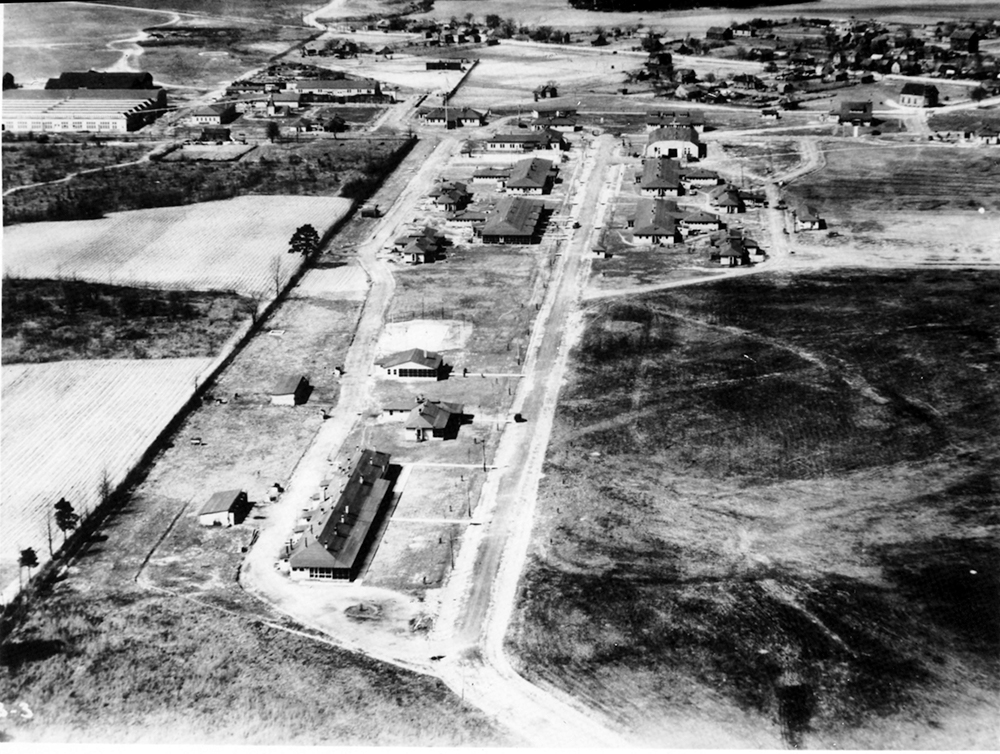Alabama base educates the Air Force, boosts state economy

By Minnie Lamberth
“Engine and Aircraft Repair Depot #3” hardly has the prestigious ring you’d expect of a 100-year-old military installation that educates the most esteemed members of the U.S. Air Force and pumps about a billion dollars into the Alabama economy every year.
Yet that was the first official designation given in 1918 to the future Maxwell Air Force Base.
Notably, eight years earlier, Orville and Wilbur Wright had come to Montgomery to establish the first civilian flying school on an abandoned cotton plantation outside the city limits. Though the Wright brothers’ school lasted only a few months – because of the distance to obtain their repair parts as well as unseasonably high winds that year – the heritage of flight had found a firm landing. And this same site was chosen a few years later for a new military mission.
“Almost a year after the U.S. entry into World War I, the Air Service decided to establish some air fields and maintenance depots that would provide pilots for combat in the war,” says Dr. Robert Kane, Air University director of history.

photos Courtesy of the Air University History Office, Maxwell Air Force Base
The Montgomery-based depot, one of three in the nation, was established on April 4, 1918, at the location of the former flying school to repair aircraft for Air Service air fields in the southeastern U.S.
The depot continued to exist at a smaller scale after the war’s end and could have been closed. Fortunately, the 1920s brought a change in mission – conducting photo reconnaissance for the Army. The 22nd Observation Squadron and the 4th Photographic Section were assigned here, and the former depot was soon renamed Maxwell Field, to honor an Atmore native, 2nd Lt. William C. Maxwell.
Moving forward in flight
In these early days of flight, Maxwell was also involved in other firsts, including a 1925 experiment to test to the feasibility of delivering mail by air. “A pilot and an aircraft of the 22nd Observation Squadron was used on a trial run that eventually led to establishing airmail routes between the Southeast and the Great Lake, United States,” Kane says.
As another example, in 1929, when severe flooding affected the southern parts of the state, Maxwell pilots and personnel loaded planes with supplies for victims and also took photographs to assist in relief efforts.
“The operation was the first large-scale use of military aircraft in the continental United States for domestic relief operations,” Kane says.

In the 1930s, the Air Corps Tactical School – the Air Corps’ first organization to provide professional military education – was relocated to the field. Faculty and students also worked on air power doctrine development that would be put to use during World War II.
Wartime turned Maxwell’s mission to flight training for American and Allied pilots. Then, as post-war planning began for a separate air force, military leaders envisioned the educational needs that would put Maxwell at the center of the branch’s leadership and doctrine development.
“In 1946, Air University came to Maxwell, and that is our current mission – professional and continuing education for airmen,” Kane says. Known as the intellectual and leadership development center of the Air Force, Maxwell’s main organization has immeasurable impact.
“The Air University reaches virtually every airman – officer, enlisted, civilian, Reserve, and Guard – in some way or another, whether it is attending one of our accredited 10-month colleges or for one of our shorter courses,” says Lt. Gen. Anthony Cotton, AU commander and president.
“Nearly every single officer and a preponderance of our enlisted corps will drive through the gates of Maxwell or Gunter at some point in their career.”
An educational mission
The educational portfolio is expansive. Air University offers accredited associate, master’s, and doctoral degrees through the Community College of the Air Force, Air War College, Air Command and Staff College, the School of Advanced Air and Space Studies, and the Air Force Institute of Technology located in Dayton, Ohio. Programs such as the Officer Training School and ROTC programs are responsible for commissioning 85 percent of new officers.

“Through our resident and distance learning programs, Air University educates over 180,000 Total Force Airmen, sister service, and international military students every year,” Cotton says.
“Our curriculum is constantly evolving to ensure we adapt to emerging threats and meet the intent of our national strategic goals,” Cotton adds. “Air University educates, trains and challenges today’s warriors so they’re prepared to lead in tomorrow’s conflicts, hand-in-hand with our joint and coalition warfighters, on every battlefield, whether it’s in air, space, or cyberspace.” Air power doctrine development and aerospace-related research are also major functions.
While Air University is the major organization at Maxwell, the 42nd Air Base Wing provides installation support for all entities on the base as well as the Gunter Annex. Among them, the Air Force Reserve Command’s 908th Airlift Wing is the flying unit located at Maxwell. Gunter Annex is home to most of the Air Force’s enlisted professional military and specialized education programs and also hosts the entities that oversee the Air Force’s information technology capabilities.

The 42nd Air Base Wing serves more than 10,500 military personnel, civilians, contractors, and students annually and supports over 22,800 family members and over 52,600 military retirees in Alabama’s River Region, according to Kane. In addition, the Maxwell-Gunter complex combined military and civilian payroll totals over $707.2 million, and the base has an average fiscal economic impact of around $1 billion.




